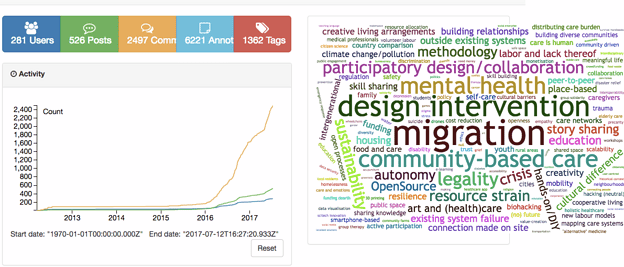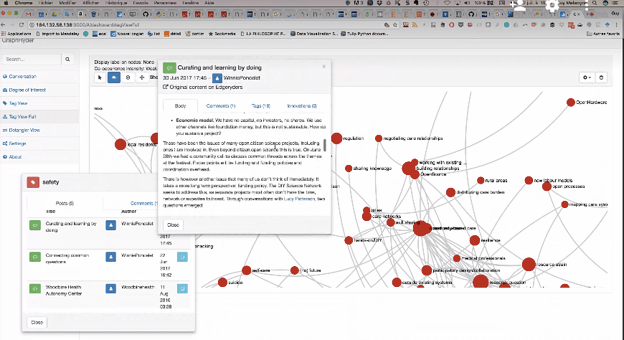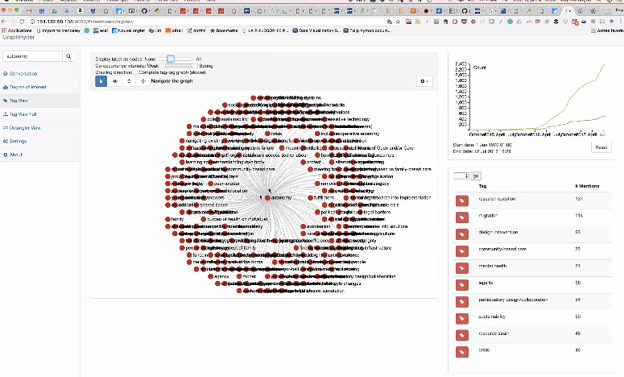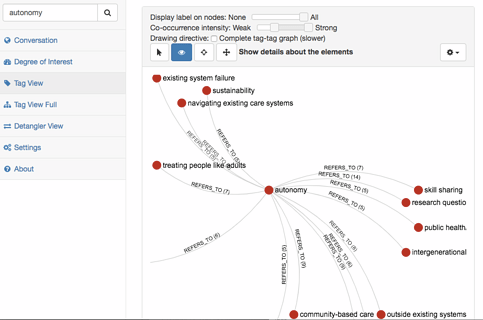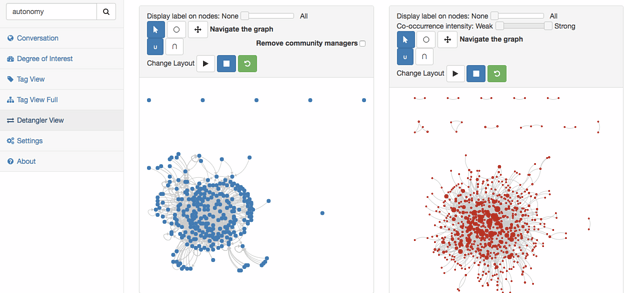Notes from the call
We made some notes during the call, here they are.
Intros:
Guy - researcher working on the software & network science part of Open Care.
Winnie - curating open and citizen science theme. Involved in biohackerspace in Ghent, Open Insulin collaboration.
Alberto Rey - working on citizen science for the festival together with Winnie, and fly fishing.
Michael - new to Edgeryders, figuring it out
Gehan - curating Architectures of Love theme: researching conditions in which opencare happens, policy. Works at Galgael trust. Conditions evolve not entirely by design.
Amelia - Edgeryders’ ethnographer. I use Graph Ryder to help with the data analysis! I’m an anthropologist and my home is London
Federico - sociologist at university of Parma. Doing anthropological research in makerspace WeMake.
Rachel - invited by Winnie, met at Biofabbing convergence. Part of Hackuarium, into citizen science and choices we can make that influence our health (risks). In on citizen science track for the festival.
Some more people joined during the session: Alberto, Bernard
This session is not technical, rather a walkthrough for the GraphRyder program.
When signing up on Edgeryders, you consented that your ‘data’ (posts, comments, …) would be used for research.
Posts have tags. You can navigate the tags and then go back to the comments.
Link tags that co-occur in conversations. Look at links that appear more frequently. Slider helps to focus on strong links. This helps to analyse why these might be appearing more frequently.
This can be accessed following the url: http://graphryder.opencare.cc and a detailed view: http://164.132.58.138:9000/index.html#/dashboard/globalView
Aware of the issues in terms of navigation around the various websites. Suggested that a simple webpage is created that links to the various sites and gives an outline.
Key word: Autonomy. Program grabs all tags that autonomy is linked with. It’s linked with a lot of key words.
High score tags that link with ‘autonomy’. You can access into the original content and posts.
The tags are made by an ethnographer. We access the whole conversation at once.
How autonomy connects with strongest connection. An association made by the conversation itself. You can read the comments and posts so you can figure out why people think these two things are connected. When someone comments on a post, chances are they will make similar comments and be tagged with the same label/s. However they will often bring something new into the conversation that will create association with new tags.
The innovation is related to the thread and it denotes new tags/elements brought to the conversation… indication of how much the thread/discussion added to the conversation. If the number is high it means many new concepts were brought into the conversation. Amelia: we haven’t properly tested the innovation theory - so it’s not to say that higher “innovation” = more interesting, it was an idea we had. So don’t assume posts with lower innovation tag aren’t interesting ![]()
We’re looking for views of community members as to how to use it. Post on the platform and ping …. Guy (@melancon) or Jason (@Jason_Vallet ).
Amelia: now we have the link we can experiment on our own and then come back and discuss further on the next call
Detangler view - people on the left and tags on the right. Use the example such as Alberto’s post some time ago that follows how a policy maker might use Graphryder as a tool.
Amelia and Jason will do a session at OpenVillage. This was the first in a series of 3 demos on navigating the GraphRyder software. They’ll shape the session considering the input of people in the following calls.
Some questions for further discussion:
- Do you have feedback for us?
- Is this tool useful to make sense of the community and conversations you're part of?
- What would you change about it?
- Do you see other applications for GraphRyder? New databases, communities etc?
